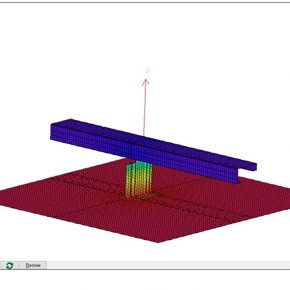
GUEST ARTICLE: How Does BIM Enable New Construction Methods and New Architectural Designs
Building information modelling (BIM) is an architectural and engineering technology that’s revolutionising the construction industry. BIM can help streamline your entire process of designing and building new structures in ways that were never possible before. This post examines the many ways BIM can be used to enhance your construction process from A-Z.
A New Dawn for the Construction Industry
The construction and architecture industries are changing. Building Information Modelling is at the heart of this change and is a way of working rather than simply a tool. BIM software has evolved greatly from Archicad in the early days to Autodesk Revit, which covers all design and construction stages through building performance analysis.
BIM Reshaping Architecture BIM is changing architecture and will continue to change it in the future. As more and more people are becoming aware of the benefits of BIM, this technology is becoming more prevalent.
Better Design
BIM allows the architect to design the building more accurately, which helps reduce errors. It makes it easier to achieve the desired outcome and reduces costs in the long term.
How? By allowing you to see how your design will look before actual construction, you can spot any issues early on and change them before spending any money on construction.

Advanced Simulation Capabilities
Another BIM-enabled advantage is the ability to simulate the construction process in advance, which helps reduce costs and errors. For example, it’s common for demolition or new foundations to be done incorrectly on a project, leading to significant delays and additional costs.
However, with BIM software, you can see how these tasks will affect your proposed building design before they occur. You can then make any necessary adjustments beforehand. Similarly, BIM simulation lets you view how changes in materials will impact structural stability before doing them in reality. It saves time and money while keeping the project on schedule.
BIM Reduces Conflicts
The right blueprints, specifications, and plans are the foundation of a successful building project. BIM helps reduce the number of conflicts and errors during the design process. Considering that a single mistake can cost upwards of seven figures, it’s obvious why this is important.
Contractors are now using BIM tools throughout the construction project from start to finish. It helps to facilitate collaboration between all stakeholders throughout the project’s life cycle. It reduces conflict in design and provides greater consistency across multiple disciplines (architecture, engineering, and construction).
Better Visualisation
BIM can also help to ensure a smooth construction process by facilitating the visualisation of 3D models. These models also allow architects and builders to prepare for challenges that may arise during construction.
Common challenges include inclement weather conditions or other factors that can impact the stability of the structure.
BIM Transforming Construction
BIM has already changed the construction industry. The technology continues to become more standardised and widespread in the industry daily – and the benefits are hard to ignore.
Modular Construction
Modular construction is constructing buildings with prefabricated building elements that are transported, assembled, and erected onsite. This method reduces costs, time, and waste. It allows for the production of components within a controlled environment. BIM empowers modular construction for residential homes, commercial buildings, and schools.
Environmental Analysis
BIM can analyse a building’s impact on the environment and surrounding communities. These models can simulate and analyse energy consumption, carbon emissions, water consumption, water runoff, and materials used in a building.
The environmental impact assessment is done through a series of computer simulations that use data from actual conditions such as weather patterns and solar exposure.
Latest news

26th July 2024
Enfield Speciality Doors completes world-class project for Atlas Copco HQ
A rundown office and warehouse building completely transformed into a modern headquarters for Atlas Copco has been fitted with more than 120 internal fire doors from Enfield Speciality Doors.
Posted in Access Control & Door Entry Systems, Articles, Building Industry News, Building Products & Structures, Building Systems, Case Studies, Doors, Interior Design & Construction, Interiors, Posts, Restoration & Refurbishment, Retrofit & Renovation, Security and Fire Protection, Sustainability & Energy Efficiency, Timber Buildings and Timber Products, Wooden products
26th July 2024
Abloy UK launches new white paper
Abloy UK, a leading provider of security and access control solutions, has launched a new white paper.
Posted in Access Control & Door Entry Systems, Architectural Ironmongery, Articles, Building Industry News, Building Products & Structures, Building Services, Doors, Facility Management & Building Services, Health & Safety, Information Technology, Innovations & New Products, Publications, Research & Materials Testing, Security and Fire Protection
26th July 2024
MCRMA Member Profile: David Roy, Director of Roofconsult
David Roy of MCRMA member company Roofconsult has more than 50 years’ experience to draw upon working in the building envelope sector and a unique perspective on how it has changed in that time.
Posted in Articles, BIM, Infrastructure & CAD Software, Building Associations & Institutes, Building Industry News, Building Products & Structures, Building Services, Building Systems, Cladding, Information Technology, Restoration & Refurbishment, Retrofit & Renovation, Roofs, Walls
26th July 2024
Strand: Enhancing Door Functionality and Safety
Craig Fox, Sales Director for Strand Hardware, outlines how door industry professionals might apply door limiting stays…
Posted in Architectural Ironmongery, Articles, Building Industry News, Building Products & Structures, Building Services, Doors, Facility Management & Building Services, Health & Safety, Restoration & Refurbishment, Retrofit & Renovation
 Sign up:
Sign up: